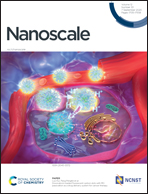Nitrogen doping and titanium vacancies synergistically promote CO2 fixation in seawater†
Abstract
The electrocatalytic generation of useful chemicals from CO2, H2O, and sustainable energy resources offers a promising strategy for the carbon cycle. However, the current CO2 electrolysis system is mainly operated in artificial electrolytes (e.g. ionic liquids and inorganic salt solutions), of which the high cost and impractical working conditions hinder its large-scale development. In this case, seawater represents an attractive alternative due to its abundance and good conductivity. Herein, we show that N-doping and titanium vacancies (VTi) can be introduced in Ti3C2 MXene nanosheets via a facile NH3-etching pyrolysis approach. These nanosheets demonstrate impressive CO2 reduction reaction (CO2RR) performances in seawater with a remarkable 92% faradaic efficiency and a partial current density of −16.2 mA cm−2 for CO production, being close to those of noble metal electrodes. Mechanistic studies reveal that the existence of N dopants and VTi synergistically modulates the electronic structure of the active Ti site, on which the free energy barriers for the key *COOH formation and desorption of *CO are greatly reduced, thereby leading to a notable CO2RR improvement. This study provides an opportunity for developing an active and cost-effective CO2 electrolysis system by using seawater as the electrolyte.



 Please wait while we load your content...
Please wait while we load your content...